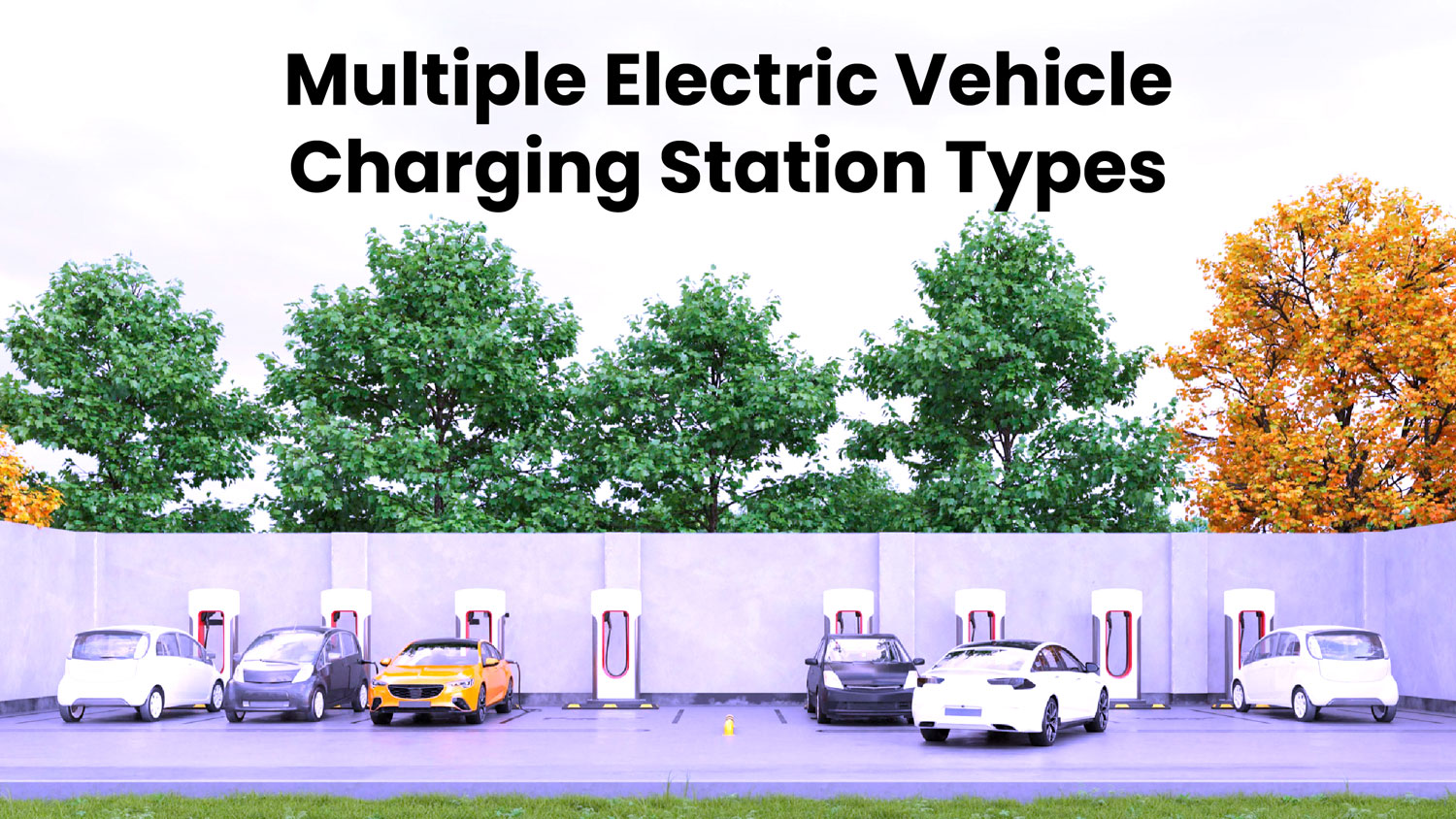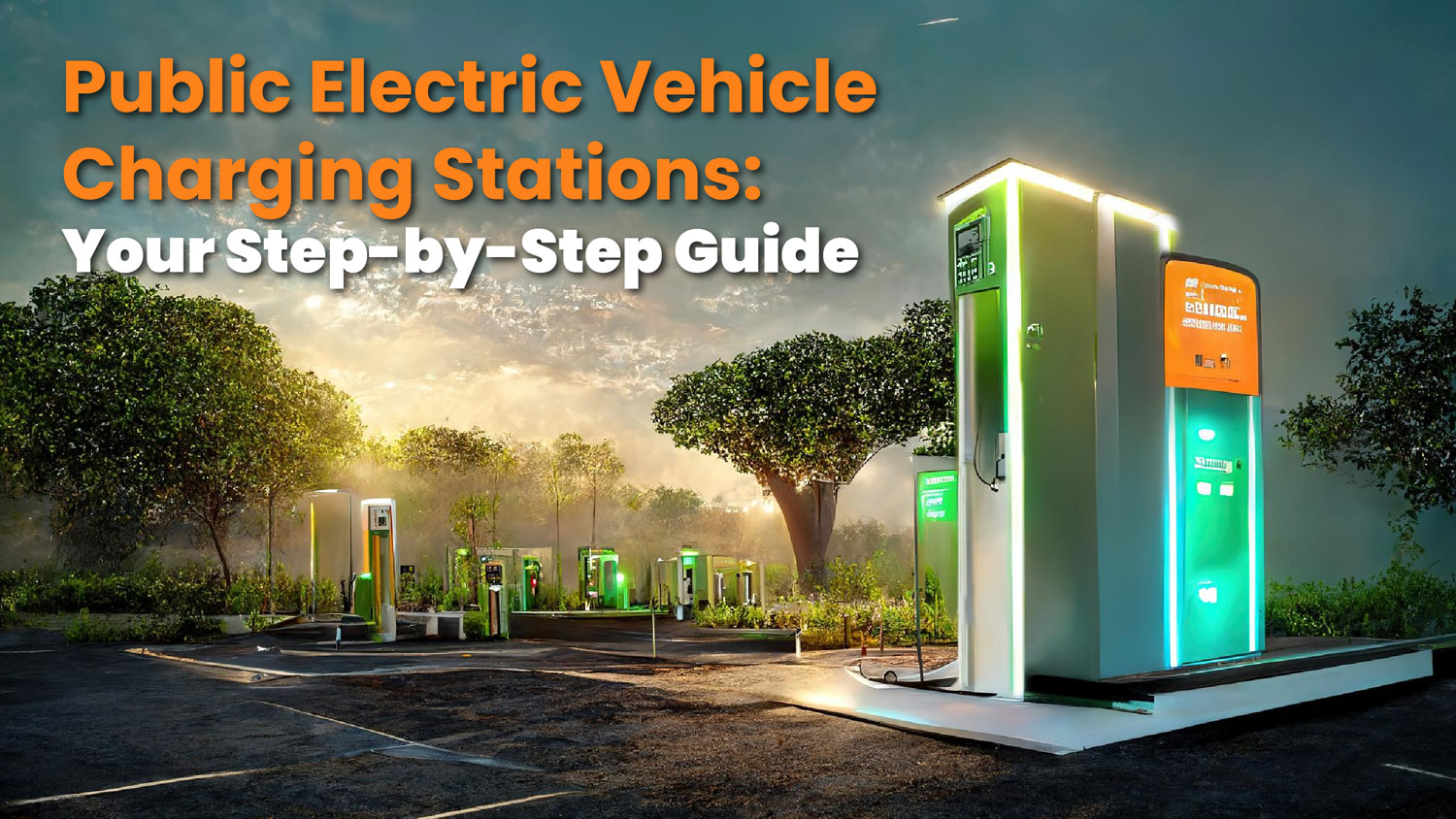As opposed to traditional gasoline-powered vehicles, one significant advantage of an electric vehicle is the convenience of home charging or the availability of electric vehicle charging stations for on-the-go use.
Charging your EV at home through a regular electrical outlet is a straightforward process. However, the emergence of EV charging stations at the far ends of expansive suburban parking lots or within urban parking structures raises several questions. This comprehensive guide tells you everything you need to know about this booming sector. Let’s get started!
Electric Vehicle Charging Station: What Does It Mean?
An electric vehicle (EV) charging station, commonly referred to as an EVSE (electric vehicle supply equipment), is a crucial part of the EV infrastructure that connects the vehicle to an electrical source for recharging the battery. There are mainly two types: AC stations, which get their power from the grid and convert it into direct current (DC) in the car, and DC stations, which charge the batteries directly and more quickly.
Public parking spaces, shopping centers, offices, and residential areas are just a few places where electric vehicle charging stations can be located. Each EVSE port or connector can charge one vehicle at a time.
It’s important to note that the establishment of a strong network of charging stations is essential to promote the widespread use of electric vehicles since it provides owners with convenience and accessibility. Many organizations and businesses, including ChargePoint and ABB, provide EV charging solutions and manage huge networks of charging stations.
Multiple Electric Vehicle Charging Station Types

EV charging stations come in a variety of shapes and sizes. Some can be installed by a professional installer, while others merely to be plugged into a wall socket and don’t need any special tools to work. The three most typical types of EV charging stations are:
1. Level 1
Since they operate with 120 V outlets, these EV chargers are common in the United States. These are the most user-friendly electric vehicle charging stations, and they are frequently found in households.
Moreover, they don’t require any additional hardware, so all you need to do to start charging your car is to plug in the equipment. For those who commute by car within one city, these chargers can offer up to 5 miles per hour of charging. Your car will be prepared for your morning journey to work if you simply leave it to charge overnight! Additionally, these chargers are the most affordable choice.
2. Level 2
These chargers can increase the speed at which your battery charges by up to 20 miles per hour, but using them requires some supplementary equipment. In Europe, Level 2 EV chargers are frequently used because they must first and foremost be managed with outlets of greater capacities, such as 208 V (commercial) or 240 V (home). An electrician is required to install the chargers, which can be connected to solar panels.
3. Level 3 (DC Fast Chargers)
DC fast chargers can extend the range of your car by up to 80 miles in just 20 minutes. These stations need equipment and vehicles with cutting-edge technology, as well as high 480 V inputs. As a result, they are utilized less often and typically find usage in commercial or industrial settings. If your vehicle is incompatible with Level 3 chargers, you can buy a specific adapter to use.
Which Apps Help You Locate Electric Vehicle Charging Stations?
Let’s start with the basics: Install an EV charging station locator app on your smartphone. You can find charging stations using the built-in navigation system of every EV. Although, this is not all. You will need up-to-date information, and numerous applications can let you know if the plugs are in use and if the station is functional.
While most apps give you the status of each charging network, PlugShare is a popular application that depends on users to provide up-to-date information about charging stations. It also helps you learn about recent updates and progress. For instance, it lets you know if the EV charger in a parking lot is currently under construction, if it is temporarily inaccessible, or if the charging process is taking longer than usual. You can access PlugShare from most modern EV touch screens as it is compatible with Android Auto and Apple CarPlay.
ChargePoint is a nice backup to download and use. It can be simple to compare the two at times, and many customers claim that ChargePoint is easier to use than other apps. Payment is made easier and the charging state of your car may be checked with the help of apps from companies like EVgo, Electrify America, and ChargePoint that offer charging stations. You do not need to use the app from the car manufacturer to connect and charge your EV at public chargers, however, some automakers might rely on the same.
Public Electric Vehicle Charging Stations: Your Step-by-Step Guide

Using public EV charging stations can seem complicated. To simplify the process for you, here’s a step-by-step guide on how to use a public EV charging station:
Step 1: Install an Appropriate App
Start by installing an easy-to-use app like Bonnet to make using charging stations more straightforward. Payments are simplified by this application, which connects to 17 of the best EV charging stations in Europe. Finding the closest station and making payments with just one app and bank account saves you from managing several accounts.
Step 2: Start with Charging Your EV
After finding a charging station, you must park your vehicle and then perform the following actions:
- Locate and activate a charging port.
- Retrieve the charger from its holster.
- Plug it into your car to initiate the charging process.
Step 3: Pay for the Vehicle Charging
Various payment options, such as accepting credit cards, special access devices, and free stations, are available for charging. Usually, each station has instructions posted on the equipment. Prices are frequently determined by the number of kilowatt-hours consumed, with some taking charging time into account. Installing a home charging station can sometimes be more affordable in the long term than using public electric vehicle charging stations frequently.
Note that charging stations typically display the energy transferred and the cost of the current charging session. They also provide a hotline for any inquiries or issues you may encounter.
Step 4: Opt for a Charger Adaptor
Most electric vehicles use the J1772 plug, but Tesla cars require an adapter for compatibility with Tesla charging stations. This is similar to using USB cables: if you have a USB-C cable for a device with a USB-A port, you’ll need an adapter. Fortunately, EV adapters are readily available online or at specialized stores at a reasonable cost. Just ensure you get the right type for your needs.
Bottom Line
Electric vehicle charging stations are the foundation for our transition to a greener, more sustainable future. As we’ve explored the realm of EV charging stations, it’s clear that the growth of the EV charging infrastructure is essential for the widespread adoption of electric vehicles. While there are costs associated with setting up an EV charging station, the long-term environmental and economic advantages far outweigh these initial investments.
As we continue to expand and improve the EV charging infrastructure, it’s crucial to consider not only the cost of electric vehicle charging stations but also the long-term benefits they bring to our environment and our daily lives. Embracing this transformative technology and investing in the future of transportation will undoubtedly pave the way for a cleaner, more sustainable world.




